Solo Travellers
Alaska Joins California, Texas, Colorado, Montana in Boosting Solo Travel with Unique Experiences to US and Canada Tourists, Here is a New Update
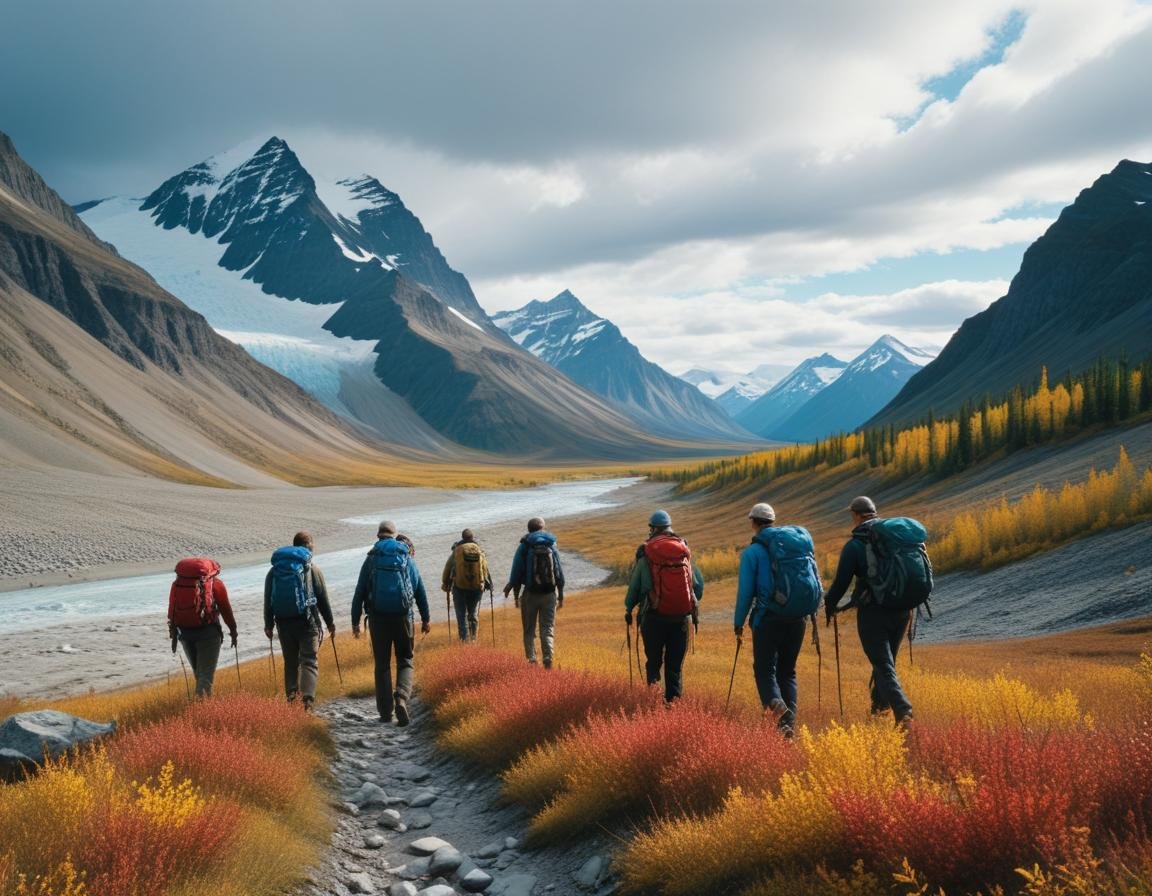
Thursday, July 31, 2025
Alaska has joined the ranks of top US destinations like California, Texas, Colorado, and Montana in boosting solo travel with unique experiences tailored for both US and Canada tourists. These states are increasingly attracting solo travelers by offering immersive and off-the-beaten-path adventures that cater to those seeking both solitude and excitement. Alaska’s stunning wilderness, from towering mountains to vast glaciers, provides the perfect backdrop for travelers looking to connect with nature while embarking on unforgettable adventures. The rise in solo travel is fueled by a growing desire for authentic, personal experiences that go beyond the typical tourist attractions.
Much like California’s coastal roads, Texas’ wide-open spaces, and Colorado’s rugged mountains, Alaska is now embracing this trend, offering everything from remote hikes to wildlife viewing and serene moments under the Northern Lights. With these unique experiences, Alaska stands out as a prime destination for travelers looking to explore the unknown and find peace in nature. Alaska’s commitment to providing personalized and intimate travel options ensures that solo travelers can enjoy an adventure tailored to their individual preferences. By joining the ranks of California, Texas, Colorado, and Montana, Alaska is making it clear that the future of travel is all about self-discovery and the joy of exploring off the beaten path.
Alaska is rapidly becoming a sought-after destination, attracting a broad range of travelers. From solo adventurers seeking nature-based experiences to families looking for memorable getaways, Alaska offers something for everyone. Its vast wilderness, wildlife encounters, and immersive experiences draw visitors from all demographics. In this article, we explore the primary groups booking Alaska trips in 2025, highlighting their motivations and the unique experiences they seek in the Last Frontier.
Solo Travelers Seeking Adventure and Solitude
One of the fastest-growing groups visiting Alaska are solo travelers. This demographic values the opportunity to disconnect from the hustle and bustle of daily life and immerse themselves in nature. For solo adventurers, Alaska offers a sense of freedom and adventure that can’t be matched by more conventional vacation destinations. Whether it’s exploring Denali National Park, hiking remote trails, or kayaking among glaciers, solo travelers appreciate the opportunity to go off the beaten path and experience the wilderness in a deeply personal way. The state’s rugged landscapes and opportunities for self-discovery continue to attract those looking for an authentic, solo journey.
Couples Seeking Romance and Unique Experiences
Alaska’s unique combination of natural beauty and intimate experiences makes it a popular destination for couples. Whether it’s watching the Northern Lights together or enjoying a quiet cruise along the Inside Passage, many couples are drawn to the romantic allure of the state. Alaska’s remote settings, luxury lodges, and cozy cabins create the perfect atmosphere for couples to relax and reconnect. The sense of tranquility and isolation found in places like Wrangell-St. Elias National Park offers couples an escape from the pressures of daily life. This blend of adventure and romance is why many couples are opting for Alaska as their next getaway.
Families Seeking Educational and Fun Adventures
Families, too, are increasingly booking trips to Alaska. The state’s wide array of family-friendly experiences, from wildlife viewing to educational museums, makes it an ideal choice for parents looking to introduce their children to the wonders of the natural world. Families can enjoy guided tours of national parks, visit the Alaska Wildlife Conservation Center, or take a cruise to explore glaciers and marine life. These educational experiences allow children to learn about Alaska’s ecosystems while having fun. Alaska’s combination of outdoor adventure and cultural discovery makes it a top choice for families seeking a vacation that is both enjoyable and educational for all ages.
Adventure Seekers Drawn to Alaska’s Extreme Landscapes
Alaska is a haven for adventure seekers looking to test their limits and engage with some of the world’s most extreme landscapes. This demographic is captivated by the state’s vast wilderness and the challenges it presents, from climbing Mount McKinley to white-water rafting down the Nenana River. Many adventure enthusiasts are attracted by Alaska’s remote locations, where they can truly push themselves and engage with nature on a deeper level. Whether it’s dog sledding, snowboarding, or exploring ice caves, adventure seekers find Alaska’s outdoor playground to be an exhilarating experience. The state’s unique combination of adrenaline-pumping activities and jaw-dropping scenery makes it a top choice for those looking for adventure at its finest.
Alaska’s Appeal to Nature and Wildlife Lovers
Another significant demographic booking trips to Alaska are nature and wildlife enthusiasts. The state is home to diverse ecosystems, including coastal rainforests, tundra, and towering mountain ranges, offering unparalleled opportunities to observe wildlife in its natural habitat. Visitors can encounter majestic creatures such as bears, moose, eagles, and whales while exploring the wilds of Alaska. The opportunity to witness the famous migration of caribou or watch puffins in their natural environment is a major draw for wildlife lovers. Alaska’s pristine, untouched landscapes provide a rare chance to connect with nature, making it a prime destination for those passionate about wildlife and conservation.
Eco-Tourism: A Growing Trend Among Alaska Visitors
Eco-tourism is a rising trend, and Alaska is leading the way in offering sustainable travel options. With its commitment to preserving its natural resources, Alaska attracts travelers who prioritize environmental responsibility. Many visitors are choosing eco-friendly tours that minimize their carbon footprint while allowing them to explore the state’s natural wonders. These tours might include wildlife watching, glacier hiking, or kayaking in protected areas. The rising demand for eco-tourism in Alaska reflects travelers’ desire to make a positive impact on the environment while still enjoying immersive, adventure-filled experiences. Sustainable travel initiatives are helping preserve Alaska’s beauty for future generations.
Older Demographics Seeking Scenic Tours and Relaxation
In addition to adventure seekers, older travelers are also booking trips to Alaska, but they are often drawn to the state for its serene beauty and leisurely activities. Alaska offers a range of scenic tours, from boat rides through its fjords to relaxing stays in luxury resorts surrounded by mountains. Older travelers, particularly retirees, are looking for vacations that allow them to unwind while still experiencing the awe-inspiring landscapes of the region. Many prefer guided tours that provide rich insights into Alaska’s history and culture, along with easy access to some of the most beautiful spots, like the Kenai Peninsula or the Inside Passage. These travelers appreciate the slower pace and the chance to enjoy Alaska’s scenic beauty in a comfortable, relaxed manner.
Best US Destinations for Solo Travelers Seeking Adventure and Solitude
If you’re a solo traveler looking for adventure and peace, the United States has some amazing places to explore. These destinations offer beautiful landscapes and exciting activities, all while providing solitude. Whether you’re hiking up a mountain, camping under the stars, or driving through empty roads, the U.S. has something for everyone. In this article, we’ll explore the best spots for solo travelers who want to experience adventure while enjoying some quiet time in nature.
Glacier National Park: A Haven for Solo Adventurers
One of the top destinations for solo travelers seeking adventure is Glacier National Park in Montana. The park is full of rugged mountains, clear lakes, and over 700 miles of hiking trails. Whether you are looking for a peaceful walk by the lake or a challenging hike up the Highline Trail, Glacier National Park has it all. The park’s large size means you can enjoy plenty of solitude while still being close to nature. It’s the perfect spot for anyone who enjoys a little bit of both adventure and peace.
Great Sand Dunes National Park: A Desert Adventure
If you’re looking for a unique adventure, Great Sand Dunes National Park in Colorado is the place to go. The park is home to the tallest sand dunes in North America, some of which reach 750 feet. Imagine hiking up these giant dunes, feeling the sand beneath your feet and the wind on your face. The park also offers other fun activities like stargazing and exploring different ecosystems. Its remote location means you’ll often have the space to yourself, making it perfect for those seeking solitude and a different kind of adventure.
Palo Duro Canyon: Texas’ Hidden Gem
In Texas, Palo Duro Canyon offers a peaceful escape for solo travelers. Often called the “Grand Canyon of Texas,” this canyon is a stunning sight with its red rock formations and wide-open spaces. The park offers various outdoor activities like hiking, horseback riding, and camping. The Lighthouse Trail is especially popular and gives you a great view of the canyon’s unique landscape. Its quiet and remote environment makes it an ideal place for travelers who want to connect with nature while having a little adventure along the way.
Markleeville, California: A Remote Retreat
For those looking for true solitude, Markleeville in California is a great option. This small town, located in Alpine County, is the least-populous county in California, giving you plenty of space to relax and enjoy the natural beauty of the Sierra Nevada mountains. Whether you like hiking, fishing, or visiting natural hot springs, Markleeville offers it all. Its remote location ensures you can spend time by yourself without distractions. It’s a quiet retreat, perfect for solo travelers who want to escape the busy world and immerse themselves in nature.
U.S. Route 50: The Loneliest Road in America
One of the most iconic solo travel experiences in the U.S. is driving along U.S. Route 50, also known as “The Loneliest Road in America.” Stretching across Nevada, this road takes you through vast, empty desert landscapes. Solo travelers can enjoy a long road trip with plenty of opportunities to stop at ghost towns, historical sites, and natural wonders. The journey is a perfect mix of solitude and adventure. It’s not only about the destinations you visit but also the peaceful, quiet drive in between. This road offers the ultimate freedom for solo travelers seeking both adventure and solitude.
The Call of the Wild: Embracing Solitude in Nature
Each of these destinations offers something unique for solo travelers seeking adventure and solitude. Whether it’s hiking through Glacier National Park’s stunning landscapes, driving along the quiet roads of Route 50, or experiencing the peaceful atmosphere of Palo Duro Canyon, these places help you connect with nature in a meaningful way. They allow you to embrace the adventure of exploring new places while also giving you time to reflect and enjoy the solitude that comes with being in nature.
Traveling solo to these destinations provides a different kind of experience than traveling with others. It’s about self-discovery, feeling the freedom to do what you want, and connecting with the world around you. These places help you escape the noise of everyday life and immerse yourself in some of the most beautiful and peaceful environments in the U.S.
Why These Destinations Are Perfect for Solo Travelers
What makes these destinations especially appealing to solo travelers is their ability to offer both adventure and solitude. When traveling alone, it’s often about finding a balance between exploration and quiet reflection. These spots provide that in spades. You can hike a challenging trail in Glacier National Park, then spend the evening by yourself watching the stars. Or, you can drive through the emptiness of U.S. Route 50, stopping to explore hidden gems along the way. The idea is to experience adventure on your terms, with enough space for solitude to connect with yourself and nature.
Safety for Solo Travelers
While these destinations are perfect for solitude, it’s important to be prepared and stay safe when traveling alone. Make sure to inform someone about your travel plans, especially if you’re heading to remote locations. Carry the necessary supplies, such as food, water, and a first-aid kit, and make sure you have a reliable map or GPS. Many of these places are in remote areas with little cell service, so it’s vital to plan ahead and be prepared for any situation.
The Growing Trend of Solo Travel in the U.S.
Solo travel is becoming more popular, especially for those seeking adventure and peace in nature. People are increasingly looking for experiences where they can connect with themselves while also enjoying thrilling outdoor activities. The U.S. offers plenty of destinations where solo travelers can explore and find solitude, and these five locations are among the best. Whether it’s a hike in Glacier National Park or a quiet road trip along Route 50, these places provide a sense of freedom and the opportunity to embrace the beauty of nature.
If you’re a solo traveler looking for adventure and solitude, these destinations in the U.S. offer the perfect mix of both. From the rugged trails of Glacier National Park to the vast deserts of U.S. Route 50, each location provides a unique experience for those seeking to connect with nature and themselves. Solo travel is all about freedom, exploration, and self-reflection, and these destinations offer exactly that. So, pack your bags and embark on an unforgettable journey into some of the most beautiful and peaceful places in the country.
How Alaska’s Tourism is Adapting to Diverse Demographics
Alaska’s tourism industry is continually adapting to the needs of its diverse visitors. From solo travelers to large family groups, the state has something to offer everyone. For adventure seekers, the emphasis is on active outdoor pursuits like hiking and climbing, while families are encouraged to take part in fun, educational experiences like wildlife tours and cultural excursions. For older travelers, the focus is on comfort, scenic tours, and easy access to Alaska’s most iconic sights. With this diverse range of experiences, Alaska is effectively capturing the interest of a wide variety of tourists, making it a must-visit destination for any type of traveler.
The Future of Alaska Tourism: A Growing and Evolving Market
As more travelers seek immersive, nature-driven experiences, Alaska will continue to be a prime destination for tourists. The growing demand for solo adventures, family getaways, and wildlife exploration will shape the future of the state’s tourism industry. In 2025 and beyond, Alaska’s tourism market will likely expand to accommodate even more travelers, especially as sustainability and eco-tourism become increasingly important. The state’s unique combination of rugged landscapes, wildlife encounters, and cultural experiences will ensure that Alaska remains at the top of travelers’ lists, no matter their age or interests.
Conclusion: Alaska as a Universal Destination for 2025 and Beyond
Alaska is becoming a top destination for travelers of all types in 2025. From solo adventurers seeking solitude in nature to families looking for educational experiences, the state offers something for everyone. Alaska’s combination of outdoor adventure, wildlife encounters, and cultural insights makes it an ideal destination for tourists from all demographics. As the tourism industry evolves, Alaska will continue to cater to a broad spectrum of travelers, ensuring its place as one of the most diverse and sought-after destinations in the world.
Solo Travellers
Renting a Camper Van for a Road Trip of Stargazing, Cook Outs, and Red Rock Hikes
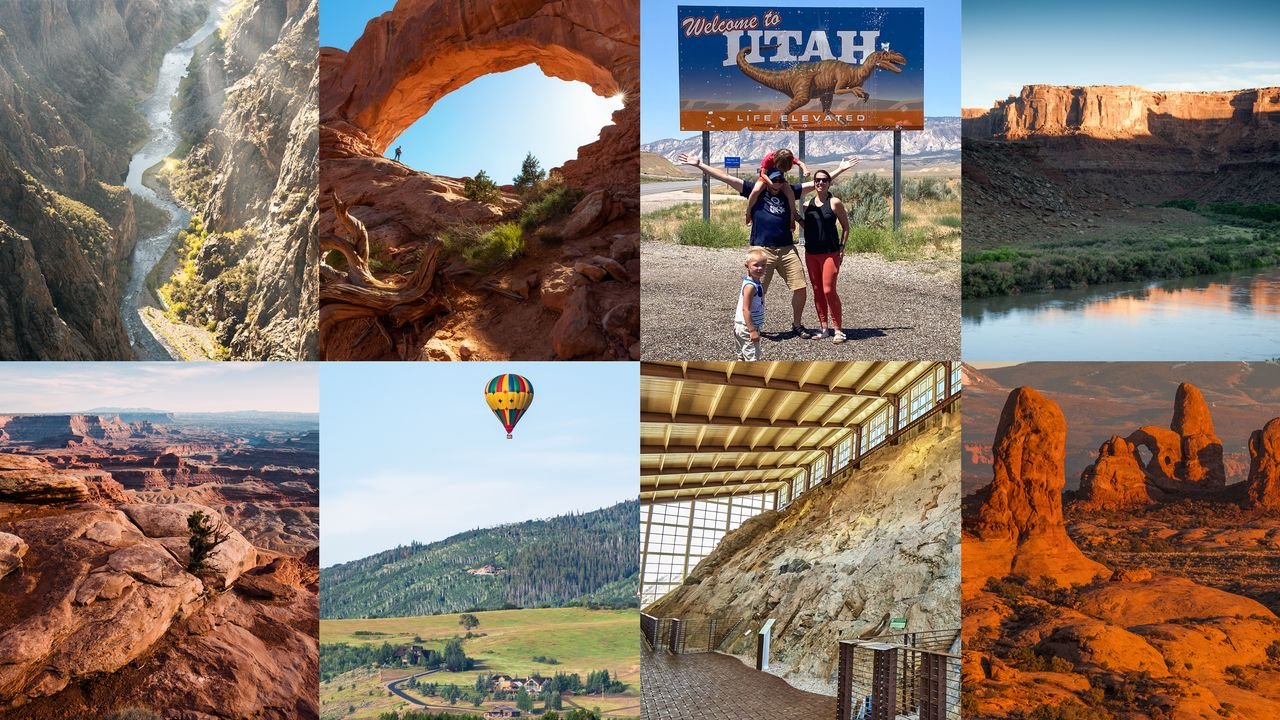
For Jo Piazza and Nick Aster, a camper van trip through the national parks of Colorado and Utah wasn’t just a summer escape—it was a way to reconnect with the adventures they loved pre-kids. “It was time for a trip out west,” Jo says. “We’d visited a lot of these national parks when we lived in San Francisco, but now it was about showing our kids—Charlie, 5, and Beatrix, 3—what makes these places so special.”
The couple, who live in Philadelphia and were expecting their third child at the time (Eliza, now born), mapped out a 10-day loop that started and ended in Denver. Along the way, they visited Rocky Mountain National Park, Steamboat Springs, Dinosaur National Monument, Moab, Arches, Canyonlands, Black Canyon of the Gunnison, and Breckenridge. “It was a bit of an epic romp,” Jo laughs. Here’s how they spent their family vacation—and how much it cost.
Why rent a camper van?
Pregnant, outdoorsy, and realistic about the physical demands of camping with two small kids, Jo knew she needed more than a tent. “Sleeping on the ground just wasn’t going to cut it,” she says. “A van gave me a good place to sleep—and full disclosure, Nick often slept out in the tent with the kids to give me a bit of luxury.”
They rented their “cabin camper” through Outdoorsy—a fully tricked-out truck with a massive cap in the back that felt like a log cabin on wheels. “People commented on it everywhere we went,” Jo says. “We’d get high fives, people asking to take pictures. At one point, someone said, ‘Hey man, we saw you in Canyonlands two days ago! That thing is awesome.”
Planning a flexible route around national parks
Unlike their usual meticulously planned vacations, this one was intentionally open-ended. “We had a general loop in mind,” Jo explains. “We knew we wanted to hit Rocky Mountain right away since it’s so close to the airport, and we knew Charlie would go bananas for Dinosaur. But the rest we figured out as we went. That’s the beauty of traveling by van—you don’t need to lock in hotels every night.”
This flexibility came in handy during a July heatwave in Moab. “We broke up the camping with a stay at the super-unhip Marriott,” Jo says. “It had a fake red rock pool and a mini water park. It flew in the face of the National Park ethos, but with 100-degree heat and two little kids, we just leaned in. They loved it.”
Top highlights for parents and kids
The kids’ favorite moments weren’t always the ones Jo and Nick would’ve picked, but they rolled with it. “They’re still talking about the pool in Moab and the fossil quarry at Dinosaur National Monument,” Jo says. “Also, they were weirdly into how much attention the van got.”
Solo Travellers
A pristine alternative to the Channel: long-distance swimming in Croatia | Swimming holidays

From the port of Stari Grad, one of the oldest towns in Europe, we slip into the water and begin swimming out of the harbour, past the church of Saint Jerome and around a pine-clad headland to a nearby bay on Hvar’s northern coast. We emerge like an amphibious invasion force – about 160 swimmers, making our way to the hotel pool bar where drinks await. So far, so civilised. But this is only a warm-up …
On 24 August 1875, Captain Matthew Webb became the first person to swim the Channel, slathered in animal fat to fend off the cold. At the time, it was heralded as a feat of near-superhuman endurance. One hundred and fifty years later, I signed up for a modern take on the 33.3km (21-mile) swim (the shortest distance across the Channel, although Webb was blown off course and ended up swimming something like 63km). This Croatian adaptation involves swimming between islands off the Dalmatian coast, is split across four days and includes a welcoming hotel (the three-star Places Hvar by Valamar) to recuperate in at the end of each day. And thankfully, neoprene has replaced tallow.
The trip is run by UltraSwim 33.3, a new company named after the Channel stretch, offering multiday swim challenges in spectacular locations – Croatia, Montenegro, Greece and Switzerland – with an emphasis on comfort and support.
“The Channel is the Everest of swims,” says Mark Turner, UltraSwim 33.3’s co-founder. “But the window to do it is short, it’s expensive, and – let’s be honest – not a particularly appetising stretch of water. With us, you get the same distance in beautiful surroundings, without having to rough it.”
I’ve been on swimming holidays before with companies such as SwimTrek and Strel Swimming Adventures, and I’ve swum up to 5km a day, but with breaks for drinks, lunch and soaking up the sun. UltraSwim takes a more structured, challenge-oriented approach. Each day begins early – we are in the water by 8am, before boat traffic picks up – and swimmers go up to 12km without pausing for more than a quick pit stop.
A detailed training plan landed in my inbox after I’d signed up and I quickly realised I wasn’t fit enough, or perhaps was mentally unprepared, for the full 33.3km swim. Thankfully, there were two shorter options available: the 11.1km “Discovery” and the 22.2km “Build” packages, both nodding to the Channel challenge.
On the first day, we set off from a jetty close to the hotel and, within minutes, I spot an octopus waving lazily from its underwater garden. I’d love to linger, but time and tide wait for no swimmer. Several kilometres later, I stumble out of the water on to the beach at Uvala Veli Dolac, exhausted but elated. We are greeted by a spread of high-energy snacks and a lot of talk about carb loading – a far cry from Webb’s fuelling strategy of beer, brandy and beef tea.
According to the Channel Swimming and Piloting Federation, Webb’s swim has now been repeated 3,250 times. The endurance trend is visible in other areas, too, from ultramarathons and multiday cycling tours to open-water relays. Increasingly, it seems, people want to return from holiday not rested but with a sense of accomplishment.
On days two and three, we tackle some proper “Channel” swims across 2-3km stretches of open water, from the Kabal headland to Stiniva beach, and Cape Pelegrin to Palmižana. On the map these are marked as ferry routes, but the views I enjoyed from the deck when I arrived in Hvar – all pine-studded islands and turquoise waters – feel very different when in the water: a distant headland to aim for, choppy seas and the occasional jellyfish.
I’ve never attempted anything quite like this before, and it’s not a challenge I relish. But I put my head down and try not to think about how far I am from dry land. There’s a GPS tracker in my tow float, kayakers on either side, and a clear course to follow – thankfully more straightforward than the one Webb swam, where strong tides dragged him way off course, turning a 21-mile crossing into a 39-mile slog.
As I swim for just over two hours, I find it hard to fathom how he kept going for nearly 22. I distract myself by recalling snapshots from the trip: the 16th-century Tvrdalj Castle in Stari Grad, where the poet Petar Hektorović once lived; and the Diocletian’s Palace in Split, where I spent a relaxed day exploring its golden alleyways and multiple layers of history, from the Roman and Venetian empires to Yugoslavia and the past 30 years of an independent Croatia.
after newsletter promotion
Once we complete the open-water channels, we circle back into gentler waters around the Pakleni archipelago, covered with the pine, wild rosemary and lavender that flavours the local honey. The name “Pakleni” comes from paklina, a pine resin once used for boat building.
Our 160-strong group is made up of swimmers from across the globe, from as far and wide as Brazil, Dubai and Australia. There are almost equal numbers of men and women, with ages ranging from 20 to 73. Some are training for an actual Channel crossing, others just want a challenge.
“It’s type-two fun,” Joe from Dublin tells me. “The kind that’s only fun after it’s over.” I think I’m more of a type-one (enjoying things at the time) person, but I do enjoy swimming across the sun-dappled kelp forests, the calm rhythm of stroke after stroke, and the quiet pride of finishing each day’s swim.
“We find that people surprise themselves,” says Turner. “The way we structure it with pacing and support, swimmers who’ve never gone beyond a few kilometres leave feeling they’ve done something extraordinary.”
Non-swimming partners aren’t left out. They can follow by boat, cheer from the shore or explore Stari Grad and Hvar. One non-swimmer told me he’d racked up a fair few kilometres on an ebike, visiting lavender farms, vineyards and sleepy fishing villages. “Other than a brief dip, swimming’s not really my thing,” he shrugged. “But my girlfriend loves it, so we’re both happy.”
On the final day, we aim for the bell tower of St Stephen’s Cathedral and swim the last few kilometres into Hvar’s harbour, emerging beside the Venetian arsenal to a glass of champagne, handed to us after we pass the finishing posts, to bemused stares from regular tourists.
A few hours later, after a soothing massage in a spa hotel, I’m wandering Hvar’s labyrinthine streets, stopping to enjoy fresh fish and Croatian wine, with no more talk of carb loading. I didn’t win anything. I didn’t swim the full 33.3km. But I completed the 11.1km course and tasted something akin to what Captain Webb must have felt: the slow, steady triumph of body over distance, albeit without the freezing water of the Channel, or the beef tea. And, instead of the pale grey cliffs of Cap Gris-Nez to signal the end, the golden limestone of Hvar.
The trip was provided by UltraSwim 33.3. Packages from €1,800pp for four nights (in a group of four, the fourth swimmer goes half-price), including hotel accommodation, breakfasts, post-swim lunches and guided swims. The next Croatia dates are in 2026 but places are available this year on trips to Montenegro, Greece and Switzerland
Solo Travellers
Going solo in Japan … 7 reasons why it’s a top spot
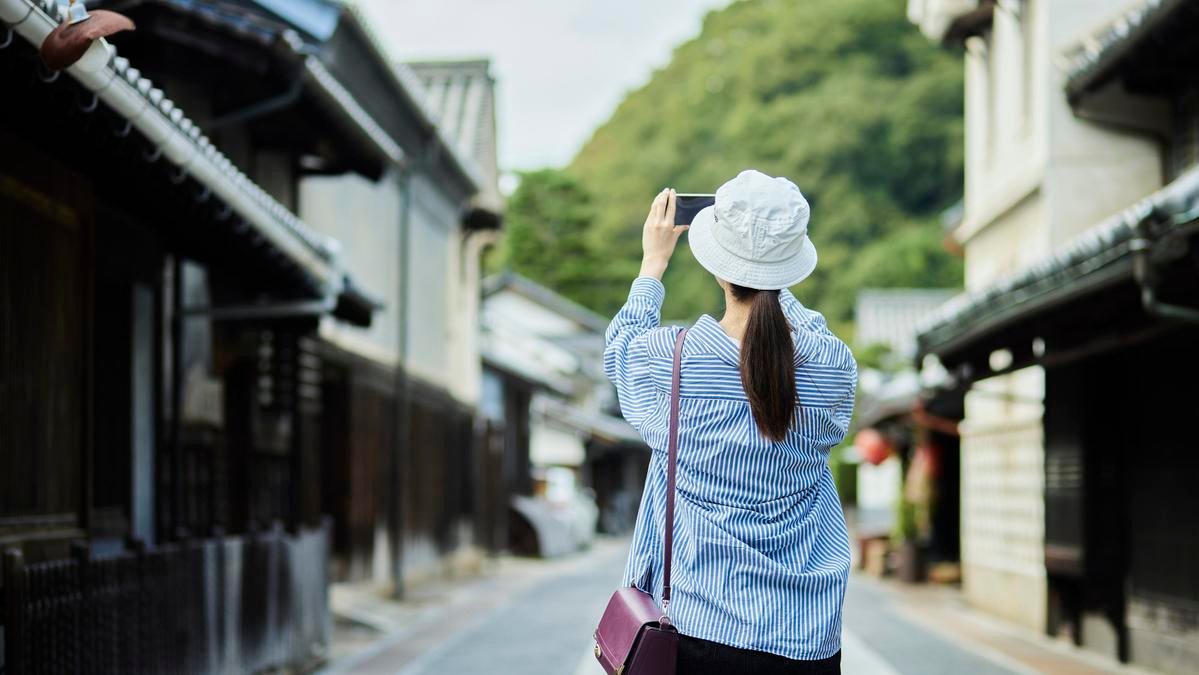
Ohitorisama. This Japanese word means “party for one” – a celebration of being solo.
And, with the rise and rise of the solo and single traveller, the Japan National Tourism Organisation sees the synergies.
For it is perfectly acceptable – normal – to venture alone into standing sushi bars, stay in small single rooms in capsule hotels and even sing “karaoke for one”.
A JNTO spokesperson says: “The concept of spending time alone has been somewhat of a cultural evolution in Japan, spurred by younger generations and a nation with one of the world’s highest rates of single-dweller households.
“This is the ultimate destination for independent travellers keen to embrace the Japanese version of ‘me time’.
“For solo travellers ready to combine cultural immersion and superb scenery with a journey of self-discovery, personal freedom and the chance to pursue their passions, Japan ticks all the boxes.”
And the JNTO team has identified these seven reasons that Japan is ideal for solo travellers, in their own words …
It’s super safe
Japan consistently ranks among the top 10 countries in the world for safety, and with a lively entertainment scene and fantastic public transport, you won’t be alone exploring after dark or travelling by train.
Cute capsule hotels
Don’t need much space? Just somewhere clean, compact and convenient to lay your head? Then check out one of Japan’s many capsule hotels, which often also include communal spaces to connect with fellow solo travellers, speedy wi-fi, luggage storage spaces and tasty snacks. There are also female-only capsule hotels or female-only floors in both capsule and more conventional hotels for women travelling independently.
Adventures after dark
From tachinomi (standing bars) serving local beer, sake and affordable snacks, to the rise of single-person karaoke parlours such as 1Kara in response to growing demand from those who want to belt out a tune or two on their own terms in the privacy of their own booth, Japan’s nightlife offers diverse options for individual travellers. independent travellers.
Memorable meals
There’s no stigma attached to dining solo in Japan, in fact, there are style of dining specifically designed for it. From standing sushi bars, known as tachigui, where solo diners can enjoy authentic, affordable sushi to ramen restaurants where diners sit side-by-side between partitions watching the chefs in action, there’s no need to miss out on a magnificent meal if you’re travelling solo. Even yakiniku restaurants have evolved to welcome solo diners by adding personal grills at the counter to cook your own sizzling cuts, whilst conveyor belt venues make it easy to mingle with fellow diners.
Slick public transport
Japan’s train network is second to none: clean, reliable and on time, literally down to the second. You can easily navigate to the right station entrance with Google Maps and pay using your phone by downloading the Welcome Suica Mobile app (iPhone only).
Cultural experiences
From art galleries and museums to temples and creative classes in everything from calligraphy and lacquerware to silk painting and sushi-making, there are endless cultural and historic activities to enjoy as a solo traveller, and many are free.
Wellness for one
Onsen bathing is delightful as a solo activity, providing an opportunity to enjoy the serenity and focus on self-care and wellness. Most onsen offer single-sex bathing options, and some ryokan and onsen towns also allow bathers to book a kashikiri buro (private bath) for the ultimate solo soak. If you have a tattoo, no worries, there are tattoo friendly onsens too.
japan.travel/en/au/
-

 Brand Stories2 weeks ago
Brand Stories2 weeks agoBloom Hotels: A Modern Vision of Hospitality Redefining Travel
-

 Brand Stories1 week ago
Brand Stories1 week agoCheQin.ai sets a new standard for hotel booking with its AI capabilities: empowering travellers to bargain, choose the best, and book with clarity.
-

 Destinations & Things To Do2 weeks ago
Destinations & Things To Do2 weeks agoUntouched Destinations: Stunning Hidden Gems You Must Visit
-

 Destinations & Things To Do1 week ago
Destinations & Things To Do1 week agoThis Hidden Beach in India Glows at Night-But Only in One Secret Season
-

 AI in Travel2 weeks ago
AI in Travel2 weeks agoAI Travel Revolution: Must-Have Guide to the Best Experience
-

 Brand Stories4 weeks ago
Brand Stories4 weeks agoVoice AI Startup ElevenLabs Plans to Add Hubs Around the World
-

 Brand Stories3 weeks ago
Brand Stories3 weeks agoHow Elon Musk’s rogue Grok chatbot became a cautionary AI tale
-

 Asia Travel Pulse4 weeks ago
Asia Travel Pulse4 weeks agoLooking For Adventure In Asia? Here Are 7 Epic Destinations You Need To Experience At Least Once – Zee News
-

 AI in Travel4 weeks ago
AI in Travel4 weeks ago‘Will AI take my job?’ A trip to a Beijing fortune-telling bar to see what lies ahead | China
-

 Brand Stories4 weeks ago
Brand Stories4 weeks agoChatGPT — the last of the great romantics







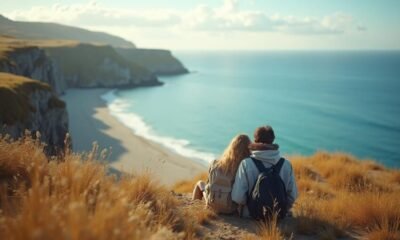

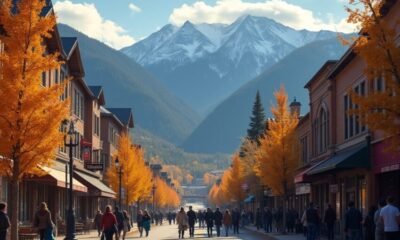

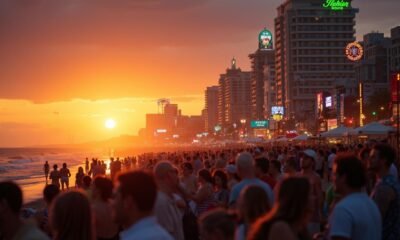

You must be logged in to post a comment Login